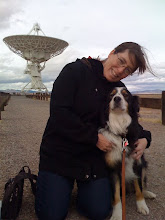So, of course, the second thing you do is go read IN DETAIL, every single paper that ever even mentioned the interesting source you've just taken a picture of. Including the theory papers. Buried in those theory papers, you find a reference to a Nature paper, that you didn't find before, for who knows what reason.
And in THAT paper, (in 2001), Miranda et al. report that the age of the photo-ionized inner region of the nebula, deep down in the round part, near the center, is 15 years*.
Not a typo.
15.
years.
This nebula transitioned from proto-planetary nebula to planetary nebula in 1985. That was the year I started high school. Wow. How fun is that?!
That's every reason to study these objects, right there. They change during your lifetime, which is extremely unusual for astronomy!
* How do they know? This is a 'dynamical age'. Basically, they measure the velocity of the outflowing ionized gas (using the Doppler Effect), measure the size of the region (which is where you are going to have errors, because the distances are usually poorly determined), and then you divide the size by the speed to get the age. (This is the same logic as saying that you traveled 60 miles at 30 miles per hour, so it took you two hours.)
A MAHA experiment: SNAP soda waivers
7 hours ago

1 comment:
Very cool. 15 years. So splendid to learn that something stellar is less than half my age.
Even more impressive is how easy astronomy is: d=rt is all there is to it, after you've done the hard work of taking a few pictures. No wonder presidential candidates want to take away your overhead projectors.
Post a Comment